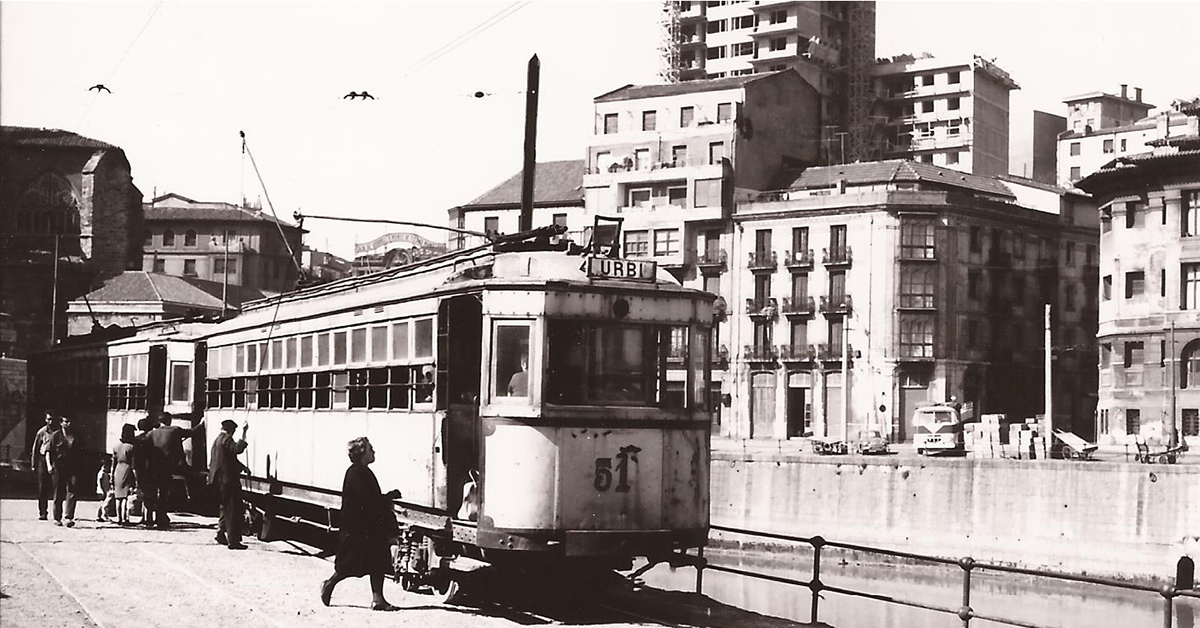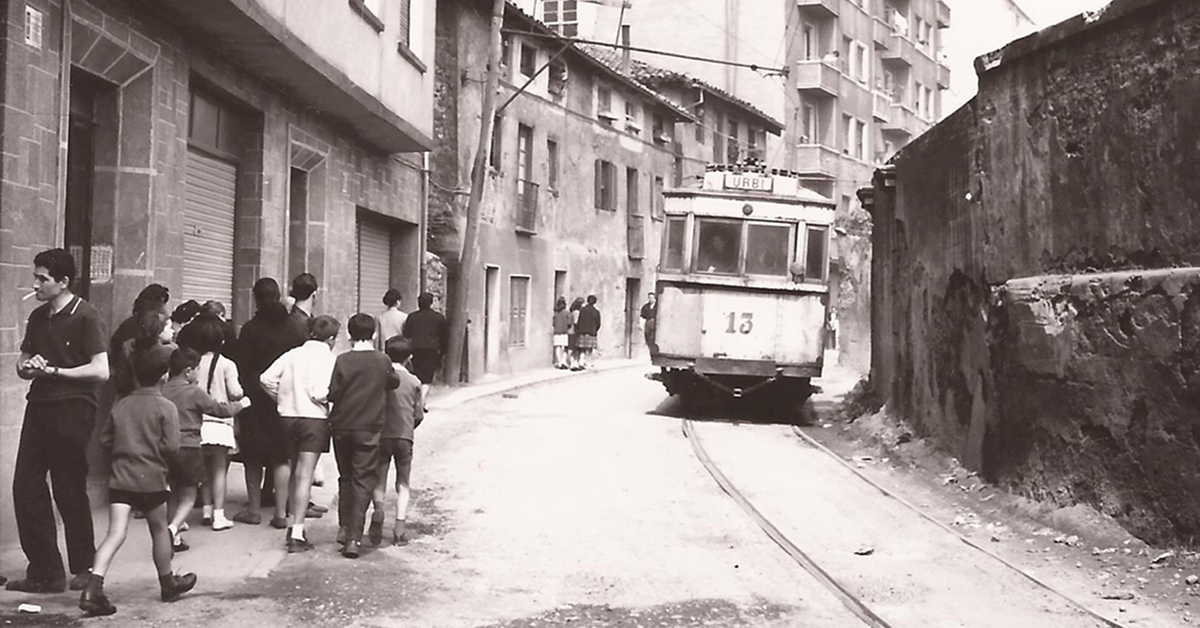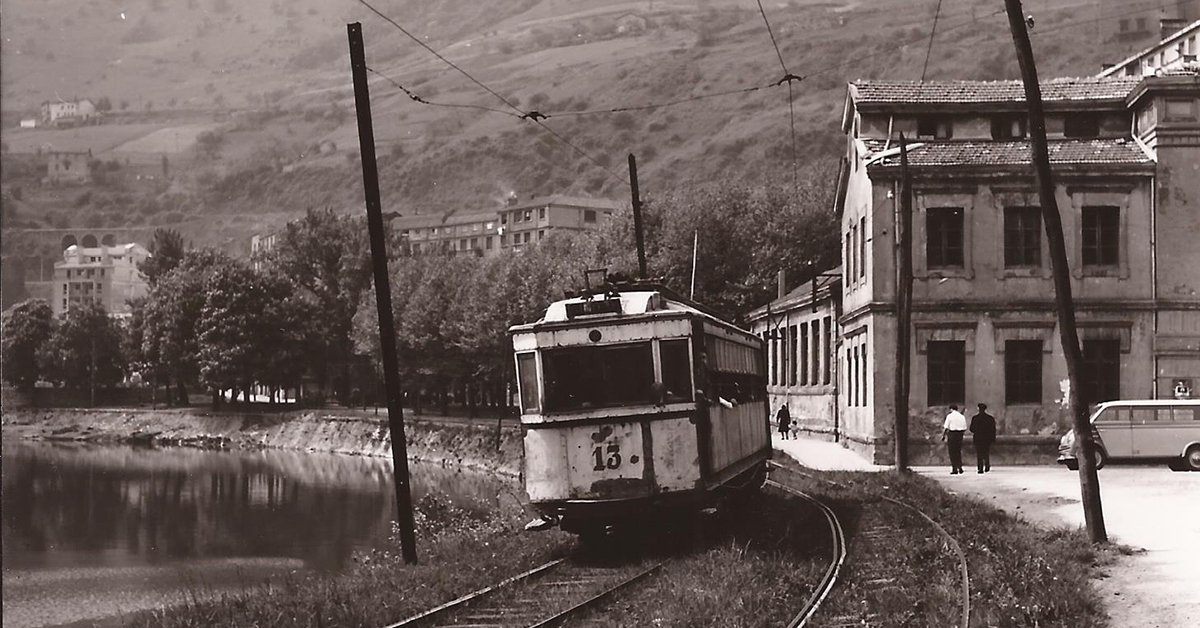
This journey of approximately two hours, at a maximum speed of 20 km/hour, would substantially change the perception of two fundamental concepts in the life of any human being: space and time. A story which begins in 1899 and ends in 1964.
Running from the Arriaga Theatre, in the heart of Bilbao, to neighbouring Zeanuri, the tramline powered a new means of passenger and freight transport at the turn of the 20th century. The tramcars ran on rails and traversed a wide variety of landscapes. The tram of Arratia was indeed a marvellous device, a product of the industrial revolution, which brought two disparate contemporary societies, with very different codes and world views, closer together: traditional life and modernity.
Our forebears would not require sophisticatedly cutting-edge technology to be able to visit altogether contrasting landscapes and other ways of living and understanding trade, work, leisure, family…, and the world. That is what the tram of Arratia provided them with, on a journey of barely thirty-eight kilometres.

If we limit ourselves to analysing the diverse spaces which coexist in the same territory, as far as traditional life is concerned, their landscapes, shapes and features still preserved their ancestral contours, although an unstoppable process began at the end of the previous century which would make its way through and end up completely disfiguring many of these areas. With regard to modernity, public life began its golden years. The opening of new public spaces in which to socialize was quite an event. The streets were an invitation for strolling, which would become a most popular pastime for the people of Bilbao, and new squares, markets, theatres, cafés and buildings of all kinds were to become places for meeting, debate and the exhibition of merchandise and citizens.
New horizons appeared with the modern times, which, no doubt, were probably strange, overwhelming and also exotic for the people of yesteryear. Globalization had not yet standardized the life of societies around us, and an upcoming sudden surprise was, so to speak, within reach.

The Arratia tramway, a modern product, became a meeting place, a space for interrelation where rural and urban worlds blended together, along with peoples from close surroundings. As soon as the tram began to plough through the valley, the traditional geographical dispersion of farms and farmhouses into neighbourhoods, typical of the northern part of the Basque Country, faded away. Folks on one slope came into regular contact with fellow folks on the opposite slope, formerly distant locations being nearer than ever. The connection between tram users favoured countless experiences, as our elders can testify. So much so that a very special phenomenon of social interaction emerged inside the tram, where all kinds of personal stories and life circumstances were shared. Friendship, love, business, dealings, anger… were part and parcel of everyday life on board the tram. It is therefore not surprising that the old tramway is remembered with such nostalgia.
The tram went into decline immediately after the civil war. There were other priorities, and the costly high-maintenance electrically powered tramway, would not be one of them. Having been replaced by a bus line, with passengers sitting on individual seats which did not facilitate interaction, the magic of the tram disappeared.
It is surprising to see that many of the public spaces created in recent decades have ended up becoming what in sociology are known as ‘non-places’. These are spaces where communication between people is conspicuous by its absence. Some are places of transience, such as airports, subways, stations…, but many traditional meeting places are turning into non-places, in a process of individualization which has already been identified by sociologists as another sign of the times we live in.
Antzasti – Basque Traditional House
Translated by Jaione Bilbao – Ethnography Department – Labayru Fundazioa
Photographs: Courtesy of Juanjo Olaizola.